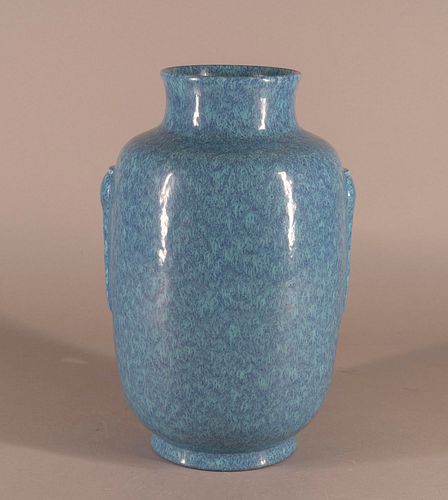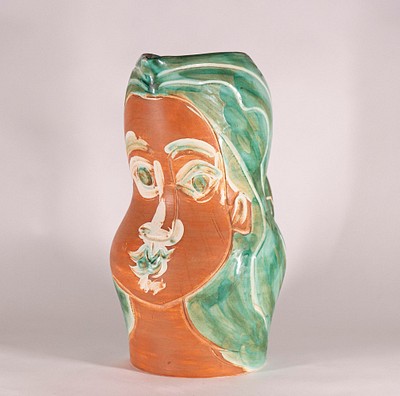Robin's Egg Lantern Vase w/ Jiaqing Mk and Period
Lot 76
About Seller
Keno Auctions
127 East 69th Street
New York, NY 10021
United States
Keno Auctions is renowned for our expertise in fine and decorative arts. With more than 30 years experience, founder Leigh Keno has established a brilliant team of experts specializing in fine art, furniture, decorative arts and jewelry.
Estimate:
$4,000 - $8,000
Absentee vs Live bid
Two ways to bid:
- Leave a max absentee bid and the platform will bid on your behalf up to your maximum bid during the live auction.
- Bid live during the auction and your bids will be submitted real-time to the auctioneer.
Bid Increments
| Price | Bid Increment |
|---|---|
| $0 | $25 |
| $100 | $100 |
| $2,000 | $250 |
| $5,000 | $500 |
| $30,000 | $2,500 |
| $50,000 | $5,000 |
| $100,000 | $10,000 |
| $500,000 | $10,000 |
| $1,000,000 | $10,000 |
About Auction
By Keno Auctions
Jun 2, 2021
Set Reminder
2021-06-02 19:00:00
2021-06-02 19:00:00
America/New_York
Bidsquare
Bidsquare : Memorial Week Estate Auction
https://www.bidsquare.com/auctions/keno/memorial-week-estate-auction-7014
Keno Auctions Leigh@kenoauctions.com
Keno Auctions Leigh@kenoauctions.com
- Lot Description
Jiaqing reign (1796-1820)
Of lantern form, called 'biqi' in Chinese, which means water chestnut, as the shape resembles that tuber, the slightly waisted neck and rolled rim above a slightly sloping shoulder, the vase shaped mock handles in relief, on a slightly flared foot rim, the underside of which is blackish-brown, the recessed base with a faintly visible impressed six-character Jiaqing seal mark, the opaque turquoise-blue glaze suffused overall with a finely mottled dark purplish blue.
H. 9 1/4 in.
Note: The Robin's egg blue glaze was developed in the early 18th century in Jingdezhen, probably in the Yongzheng period (1723-35), called 'lu Jun' or 'furnace Jun' in China, suggesting that the works were inspired by the Jun glazes of the Song Dynasty. It was fired in a furnace at a lower temperature than the porcelain itself. It is a bi-color glazing technique, the blue glaze was applied first all over and the turquoise was blown on to produce a delicate strippled effect. The Taocheng jishi bei (Commemorative Stele on Ceramic Production) lists the ?robin?s egg?-blue glaze as the first of nineteen most popular glazes from the Imperial factory in 1735.
Provenance: According to Skinner's Asian Works of Art Department, this vase was consigned by the heirs to a collector from an "old New York family".
Note: A similar vase with Jiaqing mark was sold at Sotheby's, New York, March 24, 2018, lot 1544, for $20,000 including BP; and another similar vase with Jiaqing mark was sold at Christie's, New York, September 12, 2019 lot 1128, for $35,000, including BP and a vase with six-character Qianlong mark was sold at Christie's. New York, March 21, 2018, lot 606, for $137,500, including BP. - Shipping Info
-
Buyer Pays Shipping Cost
-
- Payment & Auction Policies
-
Available payment options
-
-
- Buyer's Premium



 EUR
EUR CAD
CAD AUD
AUD GBP
GBP MXN
MXN HKD
HKD CNY
CNY MYR
MYR SEK
SEK SGD
SGD CHF
CHF THB
THB



















































